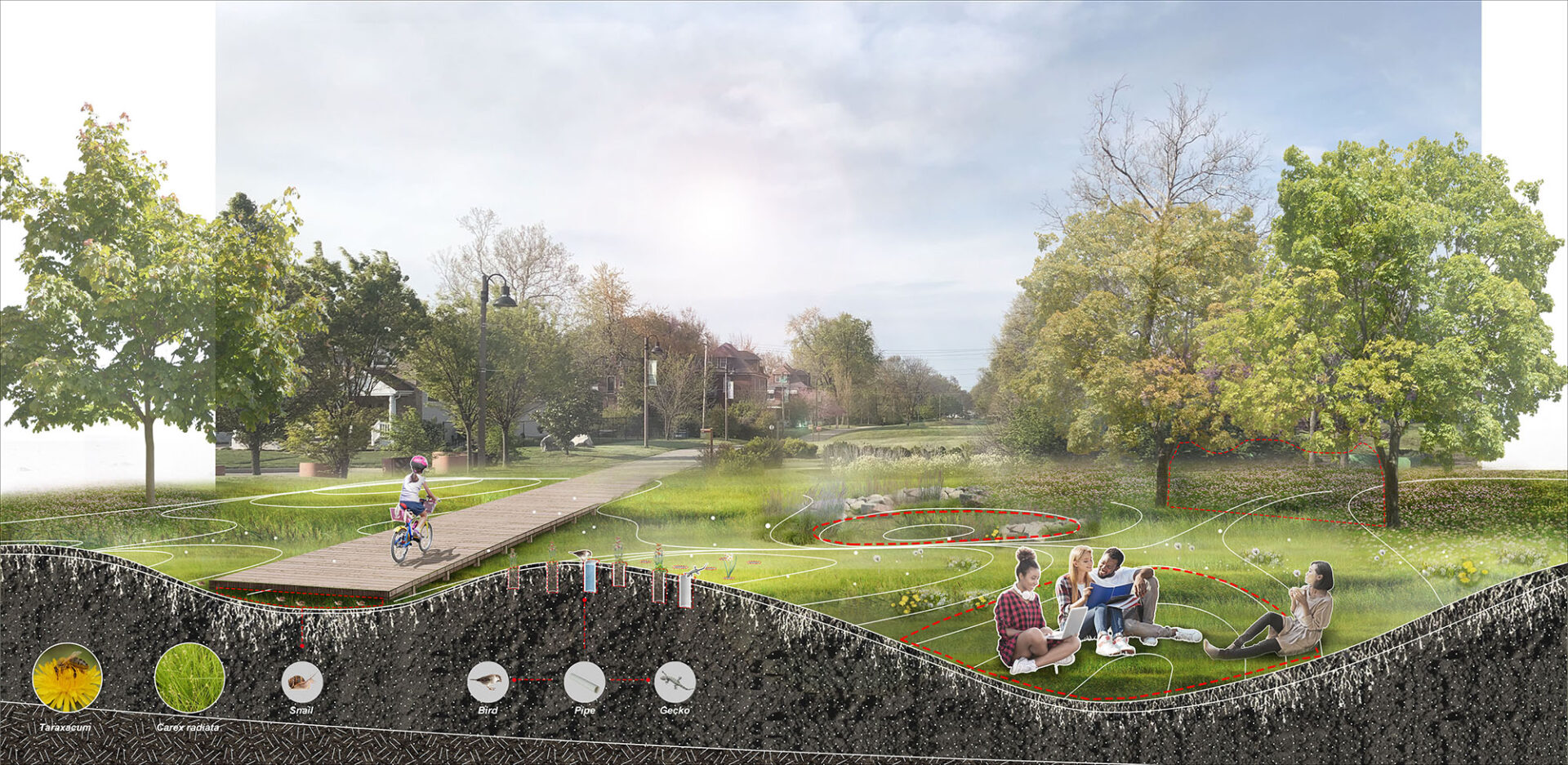LAND_402 Landscape Architecture Design II: ‘Locating Vitality in the Post-Trolley Delmar Landscape’
Micah Stanek, Lecturer
The notion of “revitalization” assumes the vitality desired in a neighborhood or city is ready-made. To recover an urban site—where something has been lost through a set of processes, leading to a decline—importing, designing, and constructing vitality is attempted.
What is meant by “vitality” and how does it help developers make monetary value where there was previously little to none? Who or what is valued in a mode of redevelopment that attempts to reproduce some codified form of vitality? Could vitality be located in the tall grass meadows of the north side of St. Louis, which emerged due to human absence and civic neglect? Can vitality be seen in the self-organized public spaces marginalized people create when they are excluded from gentrified enclaves? Rather than serving outdated modes of redevelopment by commodifying vitality, this first-year landscape architecture studio attempted to locate vitality on Delmar Boulevard.
The Loop Trolley’s run has ended, and this studio began by studying this newly disused transportation infrastructure. Students drew the conditions left by the trolley design along with the infrastructural lines typically found in urban streetscapes. Utility location marks partially reveal the underground infrastructure, and these codes trained students to observe, research, and make many layered maps. Beyond infrastructural lines, students looked for signs of human and nonhuman vitality and began making their own interpretive marks.
Student drawings gave way to forms of representation that better suit ecological perspectives. Their studies grew and branched beyond the east-west Delmar streetscape, north and south into the Central West End and Skinker-DeBaliviere neighborhoods, as well as over and under this many layered infrastructural landscape. Through maps and 3D vignettes, students developed their own understanding of urban vitality, finding ecological corridors and patches through alleys and greenways into vacant plots and parking lots. Using a dual lens—environmental and social—students demonstrated their understanding of urban ecology.
The semester included two parts, with two integrated projects. The first was an episodic streetscape design for the post-trolley Delmar Boulevard. Projects reimagined temporary or long-term use of the trolley infrastructure, while integrating concepts of vitality with the entire streetscape through the lens of ecological corridors (human or nonhuman ecology). The second project also stemmed from students’ identified forms of vitality, and likewise branched beyond Delmar. A larger site project, students added the ecological patch to the studio’s ecological ideas, reimagining a stretch of Delmar, proposing a few critical crosswalks, and designing a web of corridors and patches through their own unique ecological perspectives.

Heyue Liu

Heyue Liu

Heyue Liu

Weicong Huang

Weicong Huang

Weicong Huang

Weicong Huang